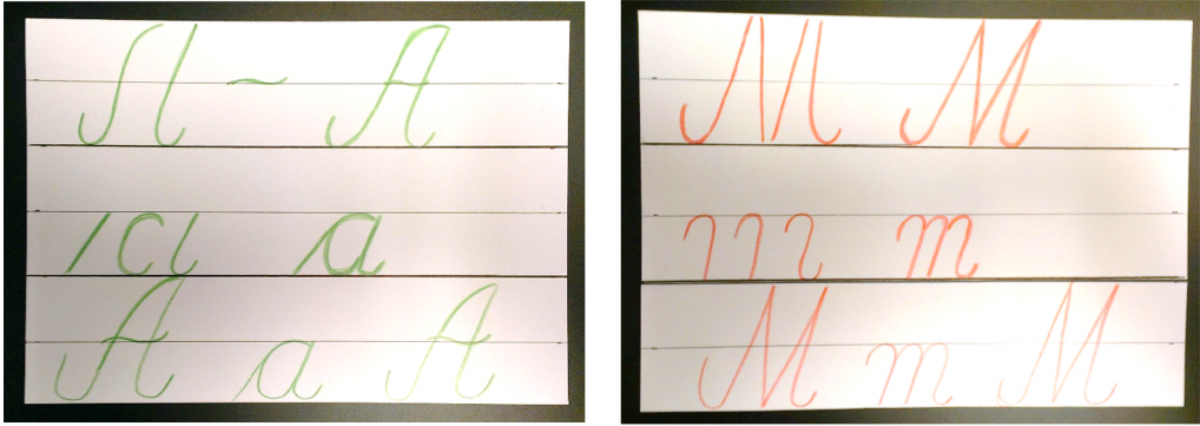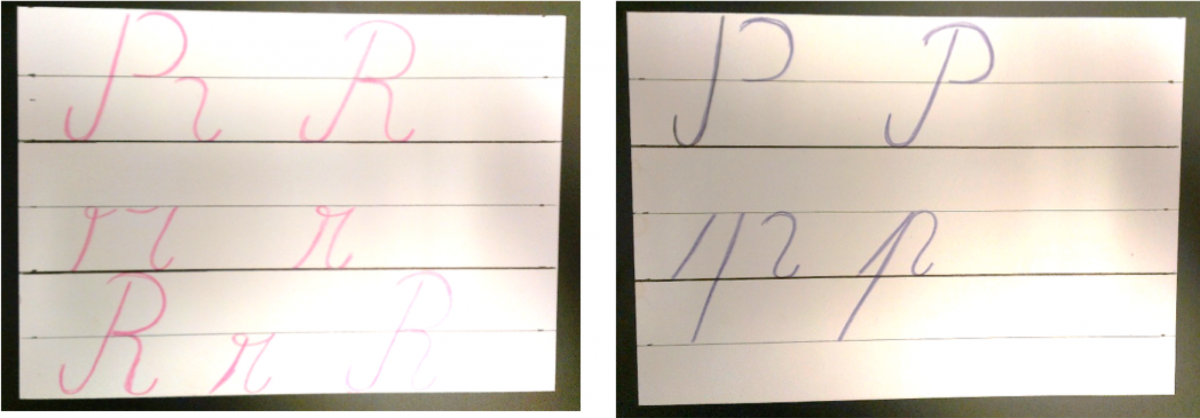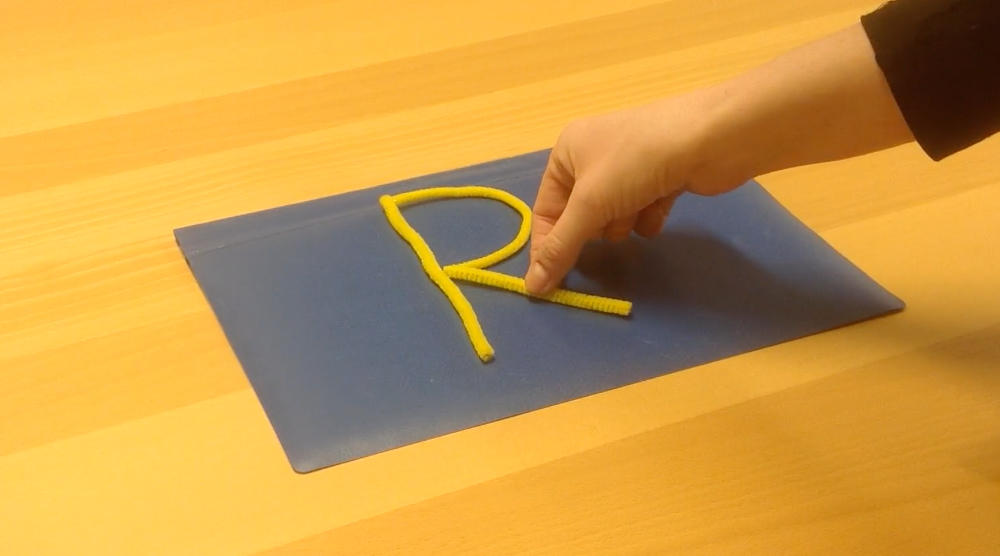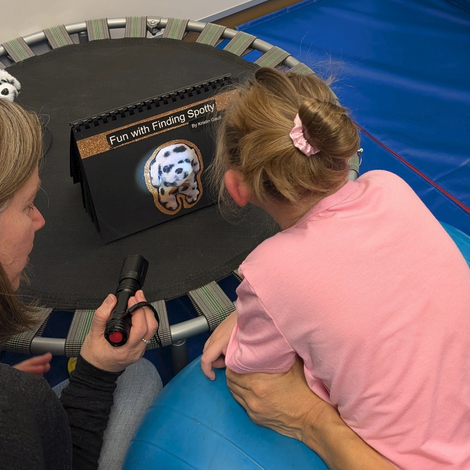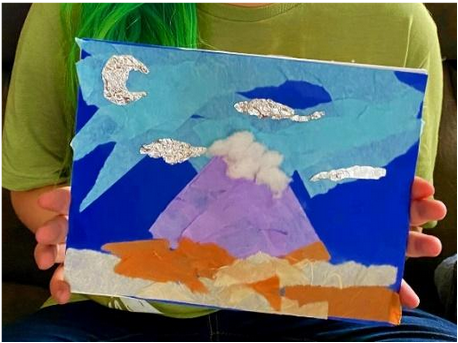This is the last part of a 5-part resource that was especially designed by Low Vision Therapist, Dr. Roxana Elena Cziker, for children with Cerebral Visual Impairment (CVI) and particularly for children with difficulties in visual spatial relations, specifically in understanding the composition of spatial configurations and the relationship between the component elements of the configuration and difficulties in writing.
Part 2: Teaching Visual-Spatial Relations Using Attribute Blocks
Part 3: Spatial Configuration with Magnetic Elements
Part 4: Strategies to Develop the Visual-Spatial Skills for Writing Letters
Part 5: Spatial Configuration with Symbols – Letters
Part 3: Spatial Configuration with Magnetic Elements
Part 4: Strategies to Develop the Visual-Spatial Skills for Writing Letters
Part 5: Spatial Configuration with Symbols – Letters
I. Practice the letter using pipe cleaners.
- Break down the letter into different components, as it is presented in the pictures below.
- Present separately each component of a letter. For instance the letter “M” is easily broken down into 4 steps: two horizontal lines and two slanted lines. When presented in this way, students with CVI will be more aware of the order of putting together different parts and analyzing the components of a letter by breaking it down into different parts.
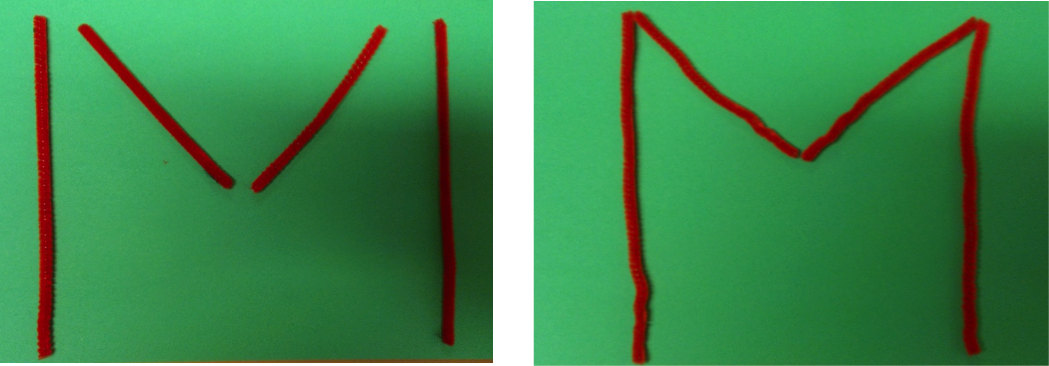
- Present the child with the letter “M” in a concrete 3-dimensional form, as well as in a 2-dimensional picture, in order to have both models in front of her at all times.
- Then present each component part of the letter and build it up, in front of the child, by making the connection among the color sticks in order to make the letter “M” (Figure 1).
- Then take apart each element of the model in front of the child and put them together again. This should be done slowly, so that the child will be able to figure out and assimilate the strategy.
- Ask then the child to do the same. Let the child follow the model made by you in order to remember the steps. After the child has mastered the strategy, you can remove the model and ask the child to do it on his/her own.
- Verbalize each step (e.g. “Now I am placing the vertical line, then the slanted line, then the other slanted line, and finally the last vertical line”). This will give the child an opportunity to practice the analysis and the synthesis.
- Invite the child to draw each component of the letter in the sand. First demonstrate how to create the model, and then do it together with the child.
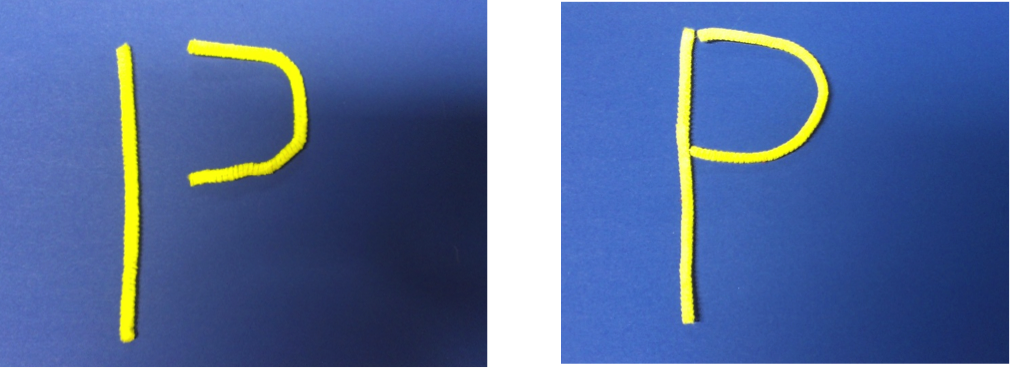
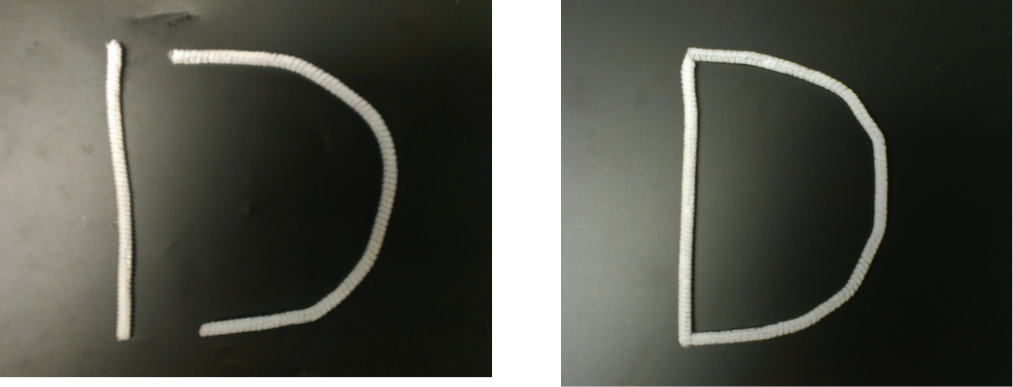

II. Practice the letter using beads and colored string.
- Practice the letters using beads on colored strings, as in the photo below (Figure 5).
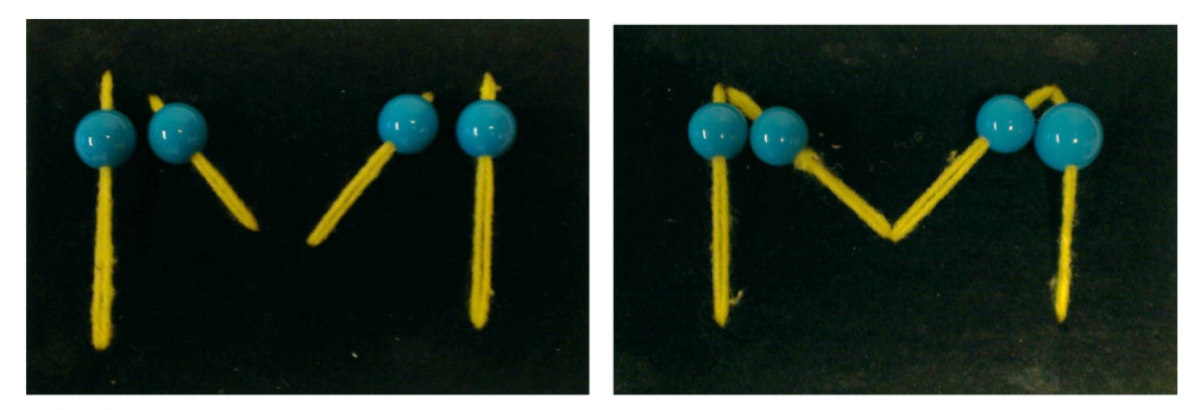
- Present the child first with a model of the component lines of each letter. Practice the movement with the beads on each line. Move the bead in the same way, in the same direction as the letter is written. For example, for the letter “M”, for the first vertical line we should move the bead from the top to the bottom, for the second slanted line from the top to the bottom, for the third slanted line from the bottom to the top and for the fourth vertical line from the top to the bottom. Verbalize as much as possible each step of the letter. First demonstrate the letter in front of the child and then ask her to do the same thing.
- Present the letter “M” to the child with all components connected and practice the same direction by moving the beads on the thread.
- Apply the same strategy to all other letters.


The three videos below demonstrate how to use these strategies for the letters “M”, “A” and “R”.
>
III. Practice the letter on the iPad with different colors.
Examples of Apps:
- Alphabet Tracing Free
- Fun for everyone
- ABC games
- Writing wizard – Kids learn to write letters, alphabet and words.
- Math Tappers: Find sums. A math game to help children learn basic facts for addition and subtraction
IV. Practice the letter on lined notebook paper.
- Practice the letter by writing each part separately. Next present the letter with all components linked together (As in Figures 8 and 9 below).
